New York State is home to a diverse range of wildlife, including a variety of captivating birds of prey. With its vast forests, sprawling wetlands, and extensive coastline, this northeastern state provides an ideal habitat for these majestic creatures.
From soaring eagles and fierce hawks to agile falcons and nimble owls, New York offers a wealth of opportunities for bird enthusiasts and nature lovers to observe and appreciate these powerful and fascinating predators.
In this article, we will delve into the world of birds of prey in New York, exploring their characteristics, habitats, and conservation efforts that aim to protect these remarkable species..
1. Peregrine Falcon
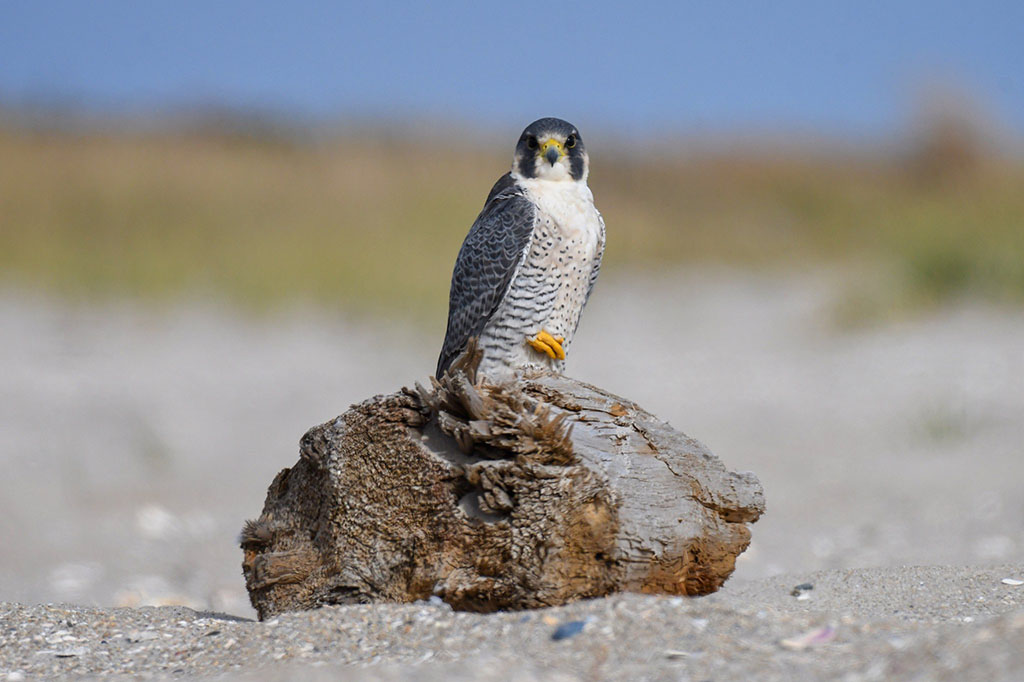
The peregrine falcon is a type of bird of prey that is found all around the world. It is also sometimes called the peregrine or the duck hawk in North America. The peregrine falcon belongs to the Falconidae family. One characteristic of the peregrine falcon is its size.
It is quite large, similar to the size of a crow. This falcon has a blue-grey color on its back, with white underparts that are marked with bars. Its head is black. The peregrine falcon is particularly famous for its speed.
It is known to be one of the fastest birds in the world. This falcon can fly at incredibly high speeds when it is hunting for its prey. Its swift flying ability is truly remarkable. Being a bird of prey, the peregrine falcon hunts and feeds on other animals.
It primarily preys on birds, catching them mid-air during flight. This falcon has sharp talons that help it catch and hold onto its prey.
Its hunting technique is both impressive and efficient. The peregrine falcon is a cosmopolitan bird, meaning it can be found in various parts of the world. It.
| Kingdom | Animalia |
| Phylum | Chordata |
| Class | Aves |
| Order | Falconiformes |
| Family | Falconidae |
| Genus | Falco |
| Species | F. peregrinus |
2. Red-Tailed Hawk
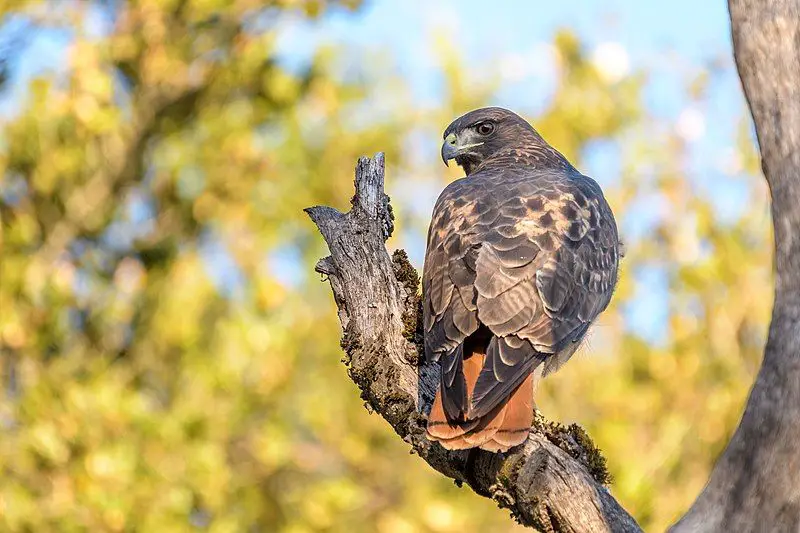
The red-tailed hawk is a type of bird known as a bird of prey. It is found in many different parts of North America. It breeds in a wide range of locations, from the interior of Alaska and northern Canada down to Panama and the West Indies.
This means that you can find red-tailed hawks in many different places throughout North America. The red-tailed hawk belongs to a group of birds called the genus Buteo. This genus includes many different species of hawks.
However, the red-tailed hawk is one of the most common members of this group, both in North America and worldwide.
This means that you are likely to come across a red-tailed hawk more often than other types of hawks within the Buteo genus. The red-tailed hawk is known for its distinctive red tail, which is where it gets its name from.
This feature helps to distinguish it from other types of hawks. However, it is important to note that not all red-tailed hawks have red tails.
Juvenile red-tailed hawks have brown tails, which only turn red as they mature. Red-tailed hawks are known for their impressive hunting skills. As birds of prey, they primarily.
| Kingdom | Animalia |
| Phylum | Chordata |
| Clade | Dinosauria |
| Class | Aves |
| Order | Accipitriformes |
| Family | Accipitridae |
| Genus | Buteo |
| Species | B. jamaicensis |
3. American Kestrel
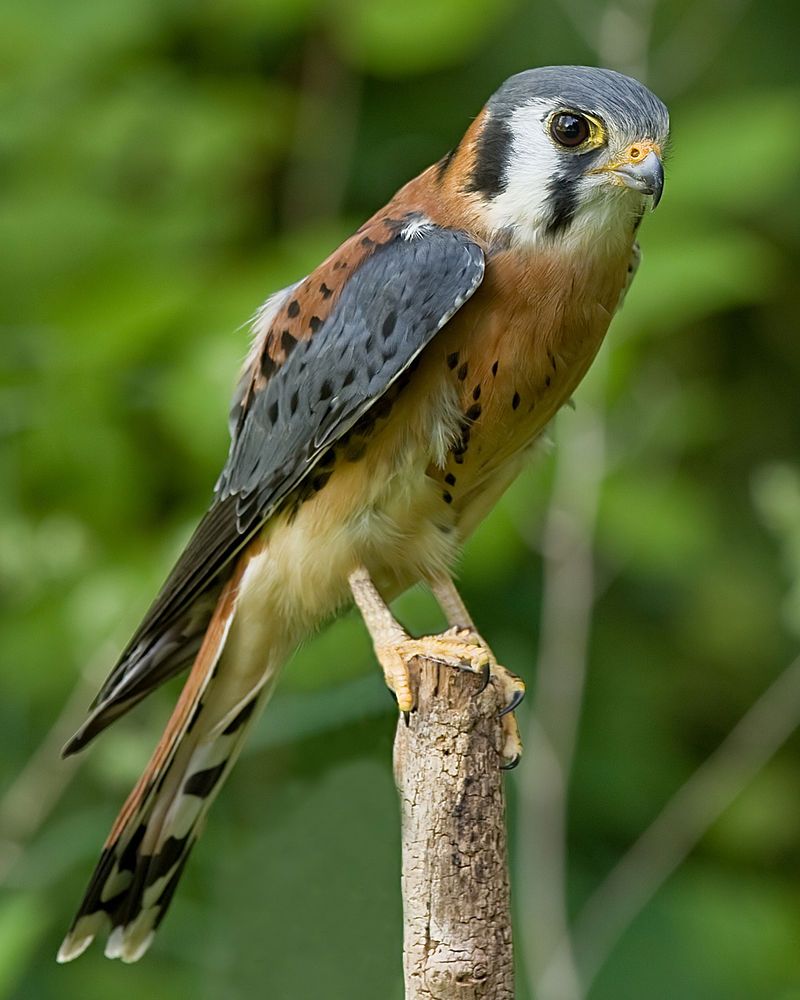
The American kestrel is a type of falcon that can also be known as the sparrow hawk. It is found in North America and is the smallest and most common falcon in the region. The size of the American kestrel can vary depending on the subspecies and the sex of the bird.
Generally, there is a two-to-one range in size between different individuals. When it comes to size, the American kestrel can range from being as small as a blue jay to as large as a mourning dove.
This means that some individuals can weigh as much as a blue jay, while others can be as heavy as a mourning dove. The variation in size within the American kestrel population can be attributed to differences in subspecies and also between males and females.
This means that females may generally be larger than males, and different subspecies may have different average sizes. It is interesting to note that despite this size variation, the American kestrel remains the smallest falcon in North America.
This indicates that even the largest individuals of this species are still relatively small compared to other falcons found in the region. In conclusion, the American kestrel is also known as the sparrow.
| Kingdom | Animalia |
| Phylum | Chordata |
| Class | Aves |
| Order | Falconiformes |
| Family | Falconidae |
| Genus | Falco |
| Species | F. sparverius |
4. Cooper’s Hawk
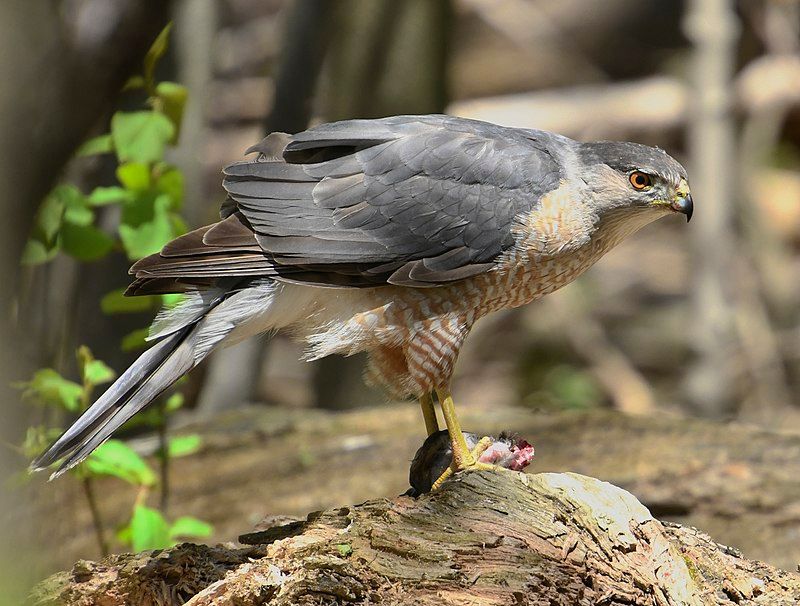
The Cooper’s hawk is a type of hawk that can be found in North America. It is considered to be a medium-sized bird.
This species is native to the continent and is commonly found in various regions ranging from southern Canada down to Mexico. One interesting characteristic of the Cooper’s hawk is its size.
It falls into the category of medium-sized hawks, which means it is neither too big nor too small. This size allows the hawk to adapt and survive in different habitats across North America. The distribution of the Cooper’s hawk is quite extensive.
It can be found in different parts of North America, including southern Canada, the United States, and Mexico.
This wide range of habitats gives the hawk ample opportunities to thrive and establish its presence in various ecosystems. Despite its widespread distribution, the Cooper’s hawk is not evenly distributed throughout its range.
It tends to be more common in certain areas while being less abundant in others. This variation in population density might be influenced by factors such as the availability of prey, nesting sites, and overall habitat suitability. The Cooper’s hawk is known for its hunting skills.
It primarily feeds on small to medium-sized birds, which it catches by surprise using its speed and agility. This hawk is well-adapted.
| Kingdom | Animalia |
| Phylum | Chordata |
| Class | Aves |
| Order | Accipitriformes |
| Family | Accipitridae |
| Genus | Accipiter |
| Species | A. cooperii |
5. Sharp-Shinned Hawk
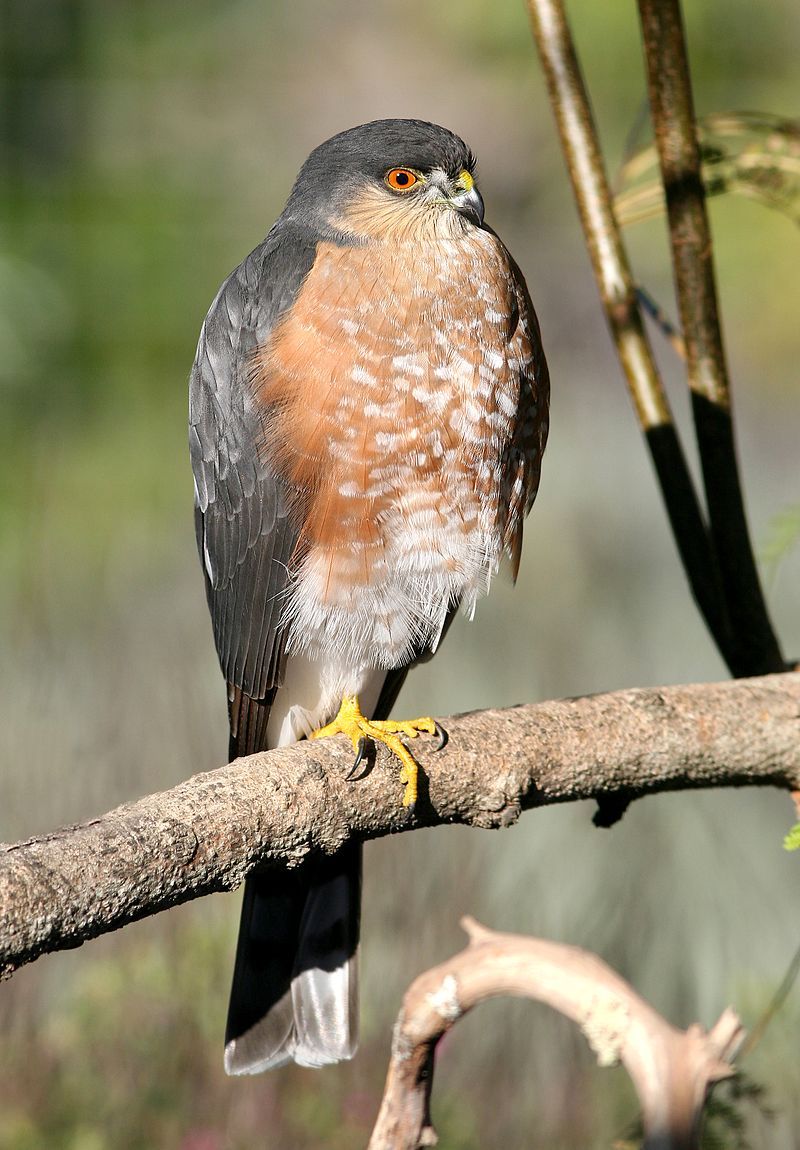
The sharp-shinned hawk, also known as a sharpie, is a small type of hawk. The males of this species are the smallest hawks found in both the United States and Canada.
However, it’s worth noting that the sharp-shinned hawk is still larger than certain Neotropical species, such as the tiny hawk. This particular species of hawk is commonly referred to as a sharpie due to its sharp features and small size.
Although it is small in comparison to other hawks, it is important to understand that it is still larger than certain types of hawks found in the Neotropics, which is a region of the Americas encompassing Central and South America.
The sharp-shinned hawk’s size is noteworthy because it is the smallest hawk species found in both the United States and Canada.
This means that when compared to other hawks that inhabit these regions, the sharp-shinned hawk stands out for its diminutive size.
Furthermore, it is interesting to consider that despite being small in the context of North American hawks, the sharp-shinned hawk is still larger on average than some Neotropical species, such as the tiny hawk.
This suggests that while the sharp-shinned hawk may be small relative to.
| Kingdom | Animalia |
| Phylum | Chordata |
| Class | Aves |
| Order | Accipitriformes |
| Family | Accipitridae |
| Genus | Accipiter |
| Species | A. striatus |
6. Red-Shouldered Hawk
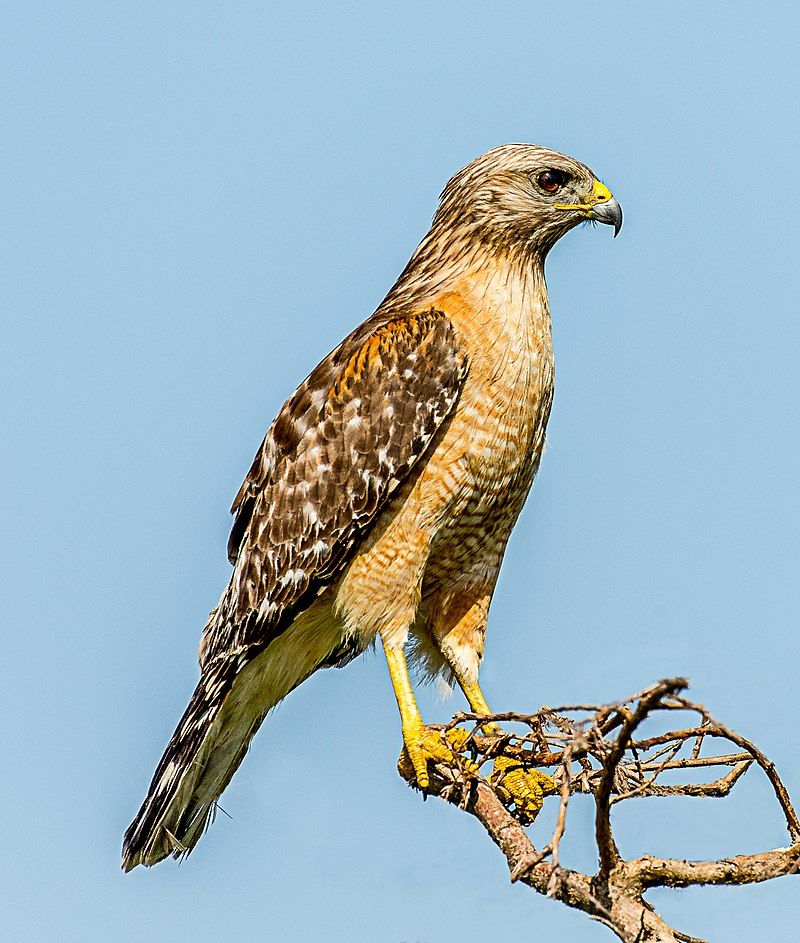
The red-shouldered hawk is a type of bird known as a medium-sized buteo. It can be found in various parts of North America, specifically in the eastern region, along the California coast, and in northern to northeastern-central Mexico.
This bird species is not a migratory one, as it is a permanent resident in most of its range. It chooses to stay in these areas year-round. However, there are some red-shouldered hawks in the northern parts of its range that do migrate.
They typically travel to central Mexico during their migration. The red-shouldered hawk is often seen in forests and woodlands, where it builds its nests and hunts for food. It prefers these types of habitats due to the availability of prey and suitable nesting sites.
These hawks have adapted to living in these environments and have become well-suited to their surroundings. As a medium-sized buteo, the red-shouldered hawk has certain characteristics that distinguish it from other birds.
Its size is not too large nor too small, making it a medium-sized bird. This allows it to have a good balance between agility and strength, which aids in its hunting and survival. One notable feature of the red-shouldered hawk is its red.
| Kingdom | Animalia |
| Phylum | Chordata |
| Class | Aves |
| Order | Accipitriformes |
| Family | Accipitridae |
| Genus | Buteo |
| Species | B. lineatus |
7. Rough-Legged Buzzard
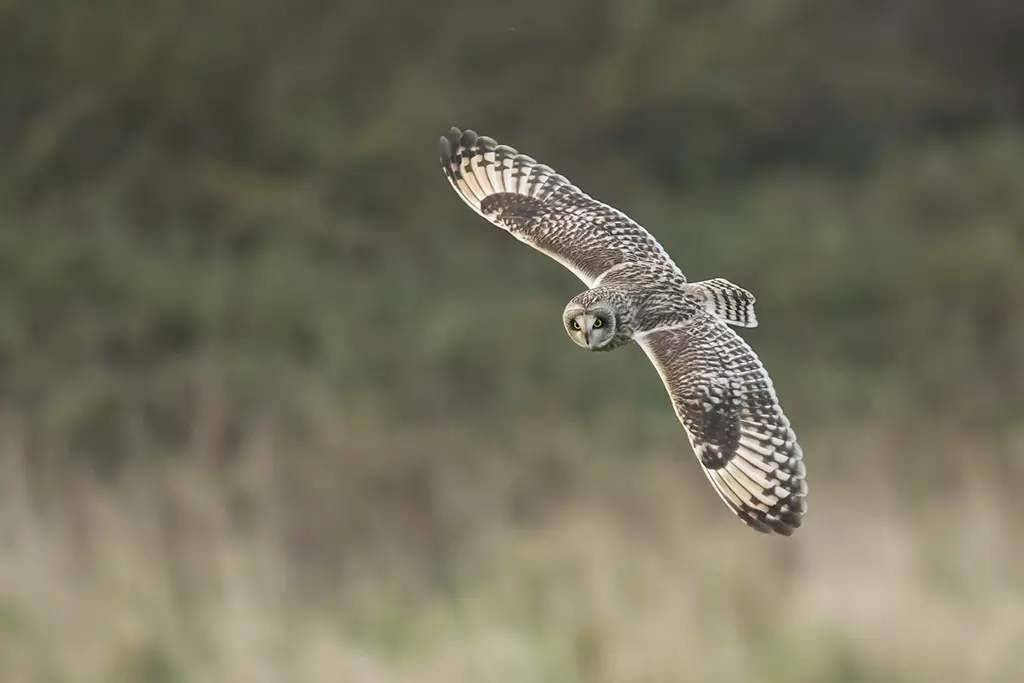
The rough-legged buzzard, also known as the rough-legged hawk, is a bird of prey that is medium-large in size. It can be found in the Arctic and Subarctic regions of North America, Europe, and Russia. During the breeding season, these buzzards make their home in these regions.
However, when winter arrives, they migrate south. These birds are well-suited to survive in the harsh Arctic and Subarctic climates. They have adapted to the cold weather and snowy landscapes of these regions.
The rough-legged buzzard has several physical characteristics that help it thrive in these environments. One of the distinctive features of the rough-legged buzzard is its feathered legs.
These feathers extend down to its feet, providing insulation against the cold temperatures.
This adaptation allows the bird to maintain its body heat and prevents frostbite. The rough-legged buzzard also has a large wingspan, which helps it soar through the air effortlessly. This enables the bird to cover long distances during migration and efficiently search for prey.
Their wings are broad and rounded, making them well-suited for gliding and hovering. When it comes to hunting, the rough-legged buzzard primarily feeds on small mammals, such as rodents. It has.
| Kingdom | Animalia |
| Phylum | Chordata |
| Class | Aves |
| Order | Accipitriformes |
| Family | Accipitridae |
| Genus | Buteo |
| Species | B. lagopus |
8. Bald Eagle

The bald eagle is a type of bird that lives in North America. It is considered a bird of prey, which means it hunts and feeds on other animals. This majestic bird is also known as a sea eagle. There are two known subspecies of the bald eagle.
Subspecies are variations of a species that have slightly different characteristics but can still interbreed. These subspecies of the bald eagle might have some differences in appearance or behavior. The bald eagle is closely related to another bird called the white-tailed eagle.
These two birds form a species pair, which means they are similar and occupy similar ecological niches.
The white-tailed eagle is found in the Palearctic region, which includes Europe, Asia, and Africa. Occupying the same niche means that both the bald eagle and the white-tailed eagle have similar roles in their respective ecosystems.
They both have adaptations that help them survive and thrive in their environments.
They might compete for similar food sources or have similar hunting strategies. In the Palearctic region, where the white-tailed eagle is found, it fulfills a similar ecological role as the bald eagle does in North America.
This means that both species have evolved to fill a specific niche or role in their habitats.
| Kingdom | Animalia |
| Phylum | Chordata |
| Class | Aves |
| Order | Accipitriformes |
| Family | Accipitridae |
| Genus | Haliaeetus |
| Species | H. leucocephalus |
9. Broad-Winged Hawk
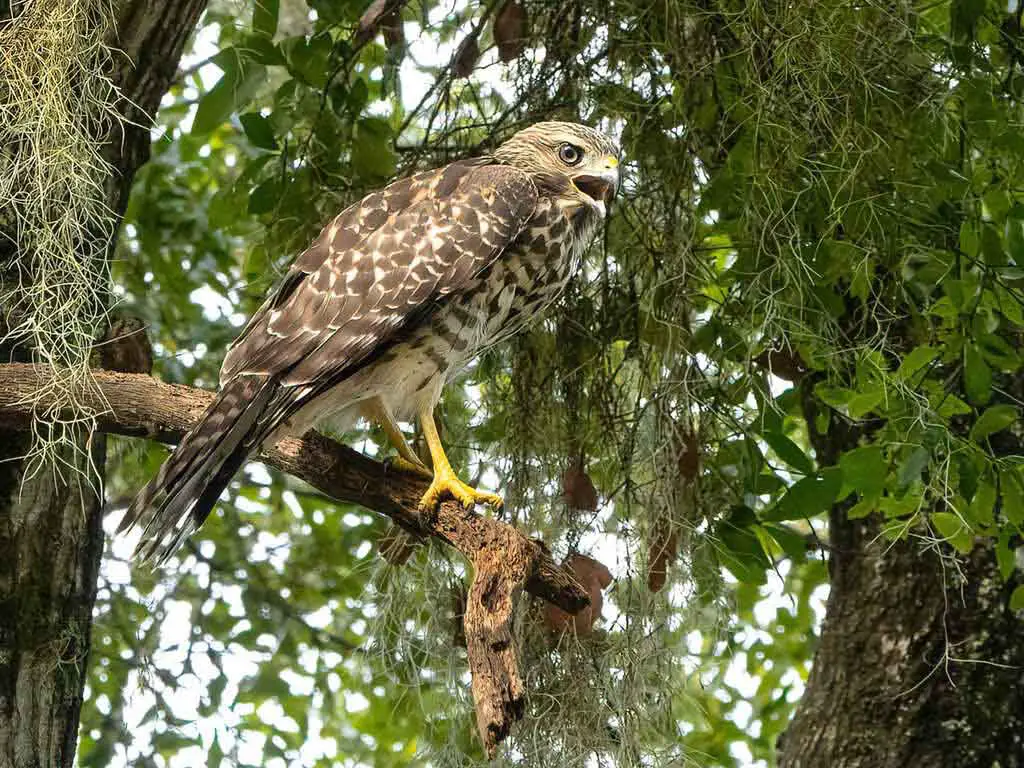
The broad-winged hawk is a type of hawk that is medium in size. It belongs to the genus Buteo. Some subspecies of this hawk are found in eastern North America during the summer. These subspecies can be found as far west as British Columbia and Texas.
However, when the winter season arrives, these hawks migrate to the Neotropics. The Neotropics is a region that extends from Mexico to southern Brazil. During the summer, the broad-winged hawk can be seen in various parts of eastern North America.
This includes areas as far west as British Columbia and Texas. These hawks prefer to reside in this region during the warmer months. They build their nests and raise their young in these areas.
However, when the temperature starts to drop and the winter season approaches, the broad-winged hawks begin their migration. They leave their summer homes in eastern North America and travel towards the Neotropics.
The Neotropics provide a more suitable environment for them during the colder months. The migration of these hawks takes them on a long journey. They fly southwards from their breeding grounds, crossing vast distances.
They travel through different regions, adapting to changing landscapes and weather conditions.
| Kingdom | Animalia |
| Phylum | Chordata |
| Class | Aves |
| Order | Accipitriformes |
| Family | Accipitridae |
| Genus | Buteo |
| Species | B. platypterus |
10. Merlin

The merlin is a type of falcon that can be found in various parts of the Northern Hemisphere. It is known for its small size compared to other falcon species.
The merlin has several subspecies that exist in different regions of North America and Eurasia. These falcons are widely distributed across their habitat range and can be found in diverse environments. They can be seen in forests, grasslands, and even urban areas.
The ability of the merlin to adapt to various habitats contributes to its widespread presence. In North America, the merlin has different subspecies that are found in distinct regions.
For example, there is the prairie merlin, which is primarily found in the central grasslands of the continent. On the other hand, the taiga merlin inhabits the boreal forests of Canada and Alaska. In Eurasia, the merlin also has varied subspecies.
They can be found in different countries such as Russia, Norway, and Sweden, among others. Each subspecies may have specific adaptations and characteristics that suit their particular environment. The Merlin falcon is known for its agility and speed.
It is a skilled hunter, capable of catching swift-flying prey such as small birds and insects. The Merlin.
| Kingdom | Animalia |
| Phylum | Chordata |
| Class | Aves |
| Order | Falconiformes |
| Family | Falconidae |
| Genus | Falco |
| Species | F. columbarius |
11. Eurasian Goshawk
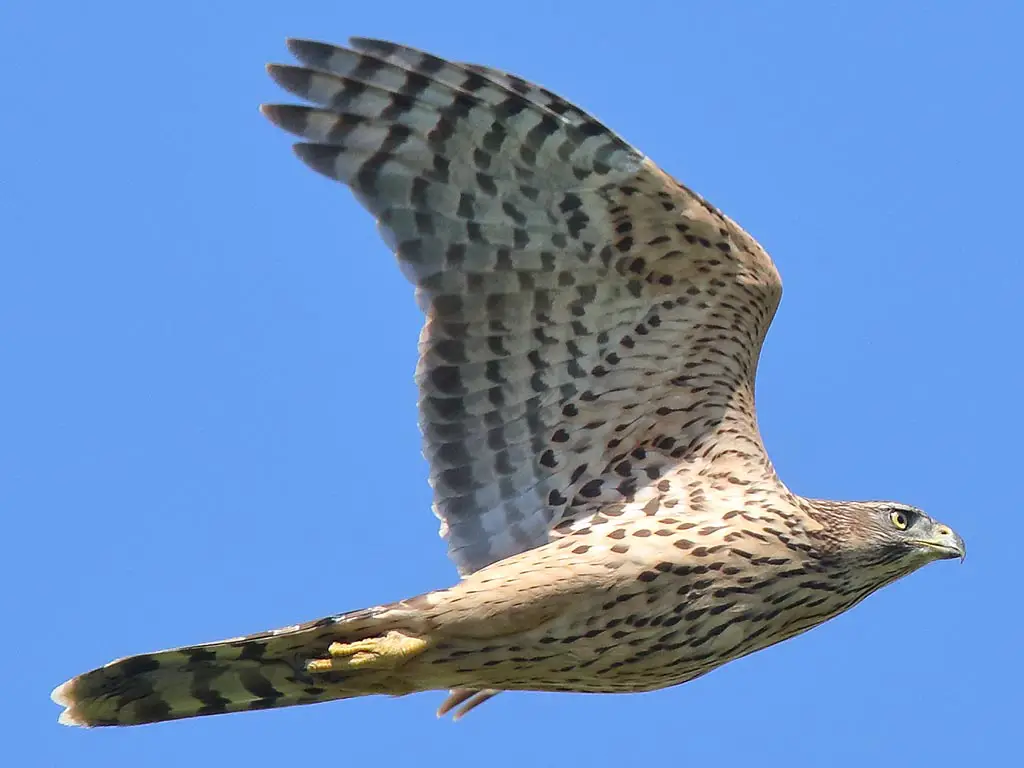
The Eurasian goshawk is a type of bird that belongs to the family Accipitridae, which also includes other birds of prey like eagles, buzzards, and harriers.
It is considered a medium-large bird of prey. Within the family Accipitridae, the goshawk is classified under the genus Accipiter.
This genus is known for including various species of hawks, making the goshawk a part of this group. Being a diurnal raptor, the Eurasian goshawk is active during the day and hunts for its prey during daylight hours.
It is different from nocturnal birds of prey like owls, which are active at night. The goshawk is often referred to as a “true hawk” because it possesses the characteristics typical of hawks.
This term distinguishes it from other types of birds in the Accipitridae family, such as eagles or harriers. The goshawk is known for its powerful build and sharp beak and talons, which it uses to catch and kill its prey.
It has excellent eyesight and agility, enabling it to hunt effectively. With its medium-large size, the Eurasian goshawk is larger than some.
| Kingdom | Animalia |
| Phylum | Chordata |
| Class | Aves |
| Order | Accipitriformes |
| Family | Accipitridae |
| Genus | Accipiter |
| Species | A. gentilis |
12. Great Horned Owl
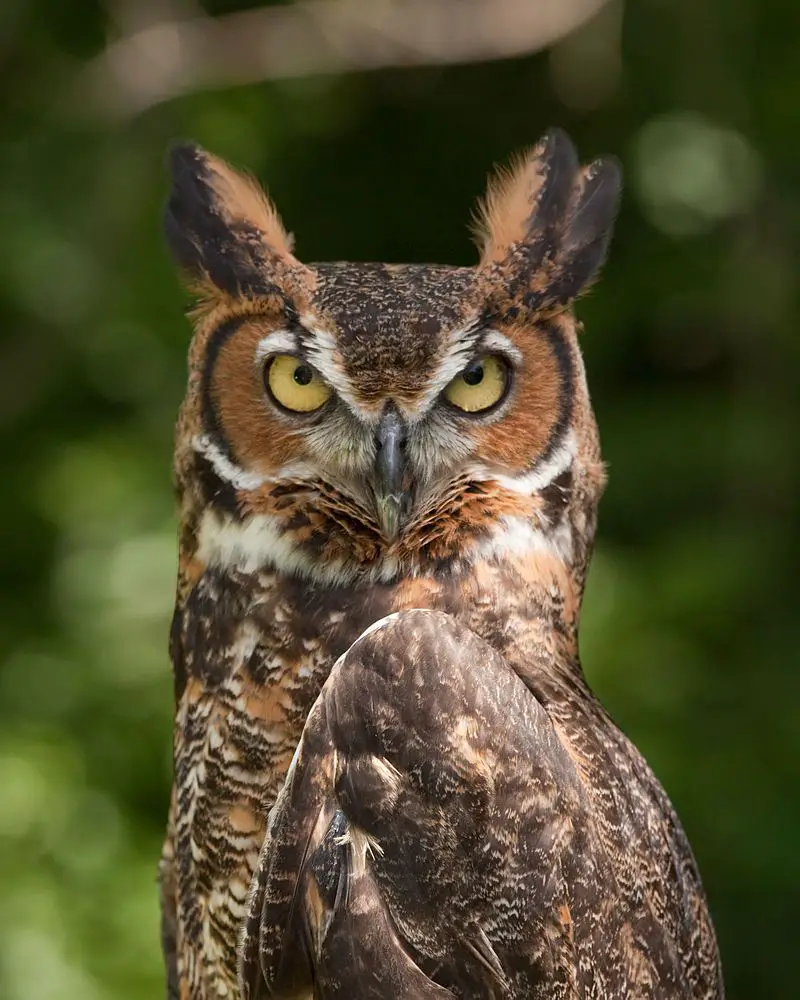
The great horned owl is a species of owl found in the Americas. It is also known by other names such as the tiger owl and the hoot owl.
This owl is known for its adaptability and can be found in various habitats across its wide range. Being a large owl, the great horned owl has a distinct appearance. It has prominent ear tufts on its head, which give it a horned appearance.
This characteristic distinguishes it from other owl species. One of the remarkable traits of the great horned owl is its adaptability. It can be found in a wide range of habitats, including forests, deserts, mountains, and even urban areas.
This versatility allows the owl to thrive in diverse environments and makes it the most widely distributed true owl in the Americas. The great horned owl is a skilled hunter, preying on a variety of animals. Its diet includes small mammals like rabbits, mice, and rats.
Additionally, it feeds on birds, reptiles, amphibians, and even other owls. This owl species has excellent hunting abilities. It possesses sharp talons and a powerful beak, which it uses to catch and kill its prey.
Its wings are designed for silent flight, allowing it to approach.
| Kingdom | Animalia |
| Phylum | Chordata |
| Class | Aves |
| Order | Strigiformes |
| Family | Strigidae |
| Genus | Bubo |
| Species | B. virginianus |
13. Snowy Owl
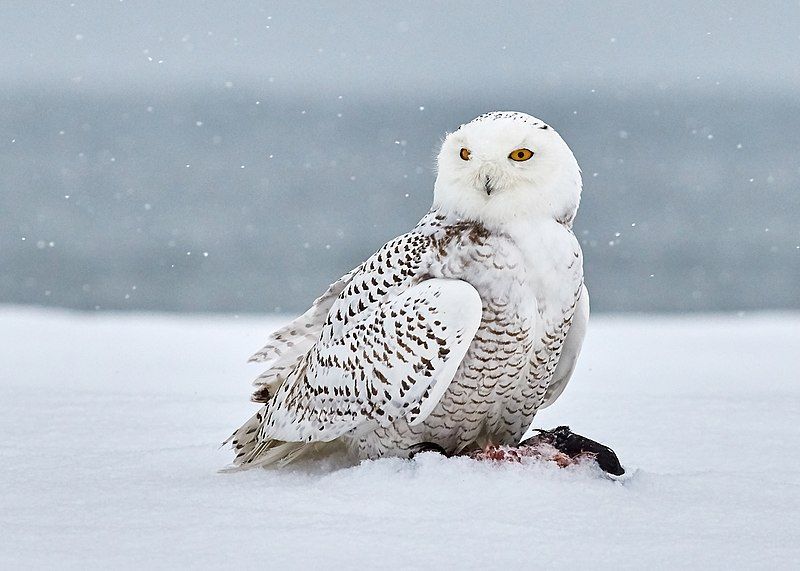
The snowy owl is a type of owl that is also known by other names such as the polar owl, the white owl, and the Arctic owl. It belongs to the true owl family and is characterized by its large size and white feathers.
These owls can be found in both North America and the Palearctic regions, specifically in the Arctic areas. Snowy owls are well adapted to their harsh Arctic environments.
They have evolved to blend in with the snowy landscapes, which helps them remain camouflaged and hidden from predators.
Their white feathers act as a protective cover, allowing them to hunt and survive in their habitat. One interesting fact about snowy owls is that they are predominantly found in the tundra regions.
The tundra is a cold and treeless biome that is characterized by low temperatures and short summers. This environment provides ideal conditions for the snowy owl’s breeding. During the breeding season, snowy owls build their nests on the ground.
They use the tundra’s vegetation and materials like feathers and moss to construct their nests. This nesting behavior is unique among owls, as most other owl species prefer to nest in trees. Snowy owls feed primarily on small mammals, such as lemmings, and voles.
| Kingdom | Animalia |
| Phylum | Chordata |
| Class | Aves |
| Order | Strigiformes |
| Family | Strigidae |
| Genus | Bubo |
| Species | B. scandiacus |
14. Falcons and Caracaras
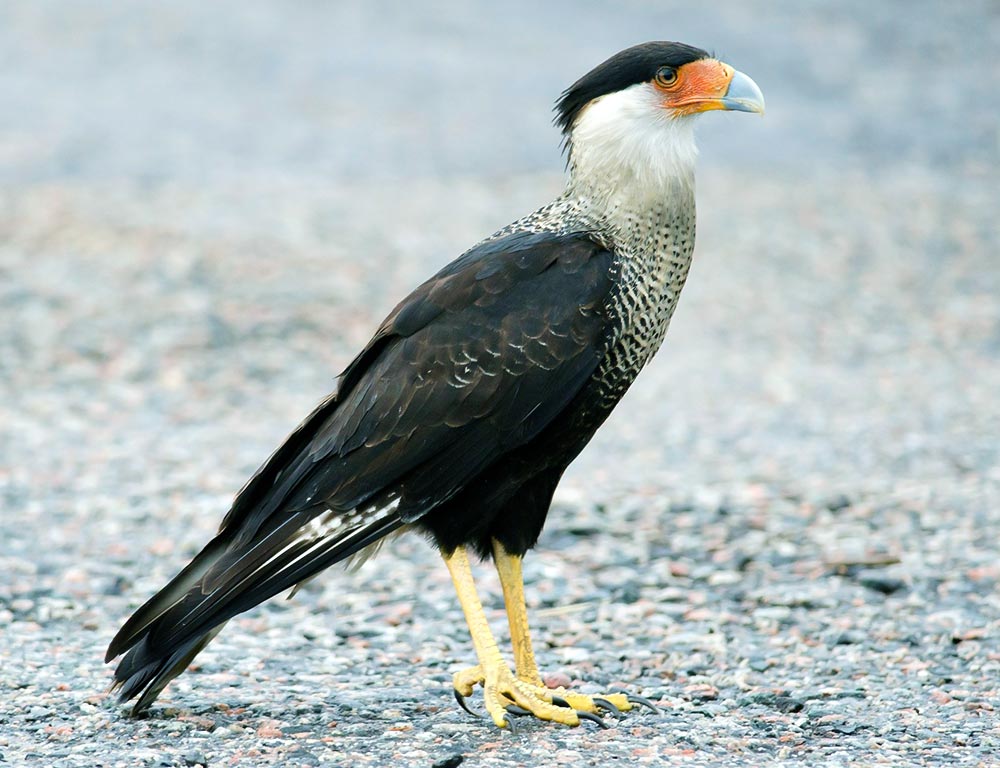
The family Falconidae consists of approximately 65 different species of diurnal birds of prey. These birds are commonly known as falcons and caracaras. Falcons and caracaras are both classified as diurnal birds of prey, meaning they are active during the daytime.
They possess keen eyesight and impressive flying abilities, which allow them to hunt and catch their prey efficiently. These birds are known for their predatory nature and their ability to catch and kill their prey in mid-air.
Falcons, in particular, are renowned for their incredible speed and agility during flight. They are capable of reaching high speeds while diving and can make swift turns and maneuvers to catch their prey.
Caracaras, on the other hand, are slightly different from falcons in terms of physical characteristics and behavior. They are generally larger and have a more robust body compared to falcons.
Caracaras are known for their opportunistic feeding habits and are often seen scavenging for food. They are also known to steal food from other birds or even harass them until they drop their prey.
The family Falconidae is found in various parts of the world, with some species being more widespread than others. They inhabit diverse habitats such as forests, and grass.
| Kingdom | Animalia |
| Phylum | Chordata |
| Class | Aves |
| Order | Falconiformes |
| Family | Falconidae |
15. Eastern Screech Owl

The eastern screech owl, also known as the eastern screech-owl, is a type of small owl. It is commonly found in Eastern North America, spanning from Mexico up to Canada. This owl species is known for its small size, making it relatively easy to identify.
It is not particularly large like some other owl species. The eastern screech owl is considered to be a fairly common sight in its range, which covers a wide geographic area. Despite its name, the eastern screech owl does not only screech.
It has a variety of vocalizations, including whistles and trills. These sounds can be quite distinct and are often heard during the night.
This owl species is known for being vocal and can produce a range of different calls. The eastern screech owl is primarily nocturnal, meaning it is most active during the night.
It spends its days roosting in tree cavities or other hidden areas, using its excellent camouflage to blend in with its surroundings.
This owl’s plumage, or feathers, helps it remain well hidden and protected from predators during the daylight hours. This owl species has adapted well to living in various habitats, including forests, woodlands, and even.
| Kingdom | Animalia |
| Phylum | Chordata |
| Class | Aves |
| Order | Strigiformes |
| Family | Strigidae |
| Genus | Megascops |
| Species | M. asio |
16. Barred Owl
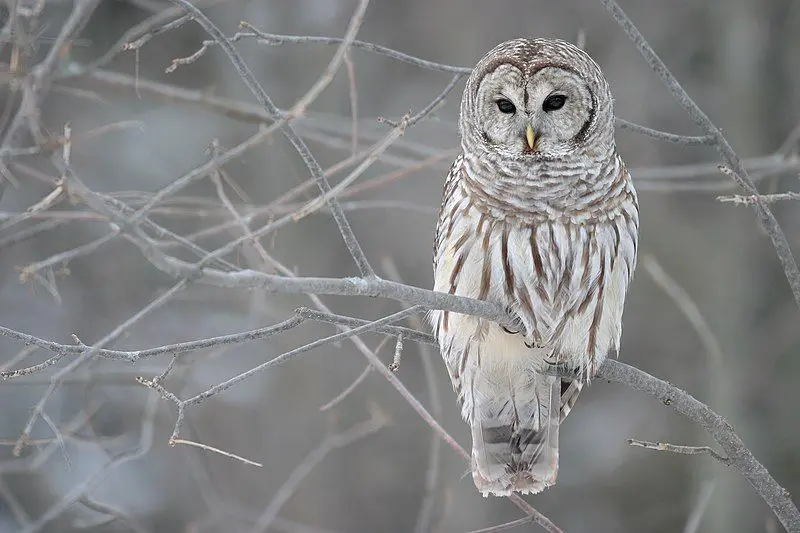
The barred owl is a type of owl that can be found in North America. It is sometimes called the northern barred owl, striped owl, hoot owl, or eight-hooter owl.
This owl is quite large compared to other owls. It belongs to a family of owls called Strigidae, which are known as true owls. The barred owl specifically belongs to the genus Strix.
The name of the family, Strigidae, actually comes from the genus Strix. Linnaean taxonomy is a system of naming and classifying organisms that was created by Carl Linnaeus, a Swedish botanist.
This system organizes living organisms into different categories based on their characteristics. The barred owl’s scientific name is Strix varia.In Linnaean taxonomy, the genus name comes first, followed by the species name.
So for the barred owl, Strix is the genus and varia is the species.
This helps scientists and researchers identify and study different species. The barred owl is known for its distinctive call, which sounds like “who-cooks-for-you, who-cooks-for-you-all.” This call is often heard at night, which is why it is sometimes referred to as a hoot owl.
| Kingdom | Animalia |
| Phylum | Chordata |
| Class | Aves |
| Order | Strigiformes |
| Family | Strigidae |
| Genus | Strix |
| Species | S. varia |
17. Turkey Vulture
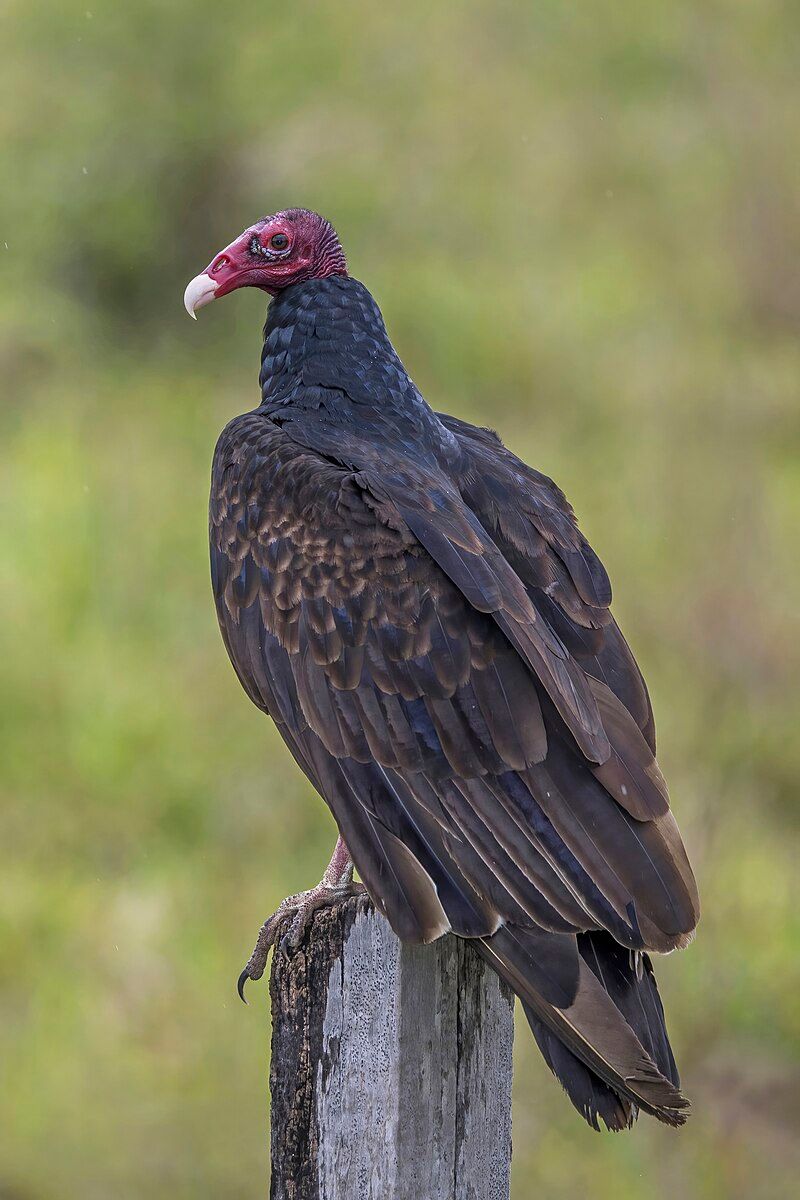
The turkey vulture is a type of vulture that can be found in many different parts of the Americas. It is actually the most widespread of all the New World vultures. There are three species of vultures in a group called the genus Cathartes.
The turkey vulture is one of these species. It belongs to the family Cathartidae, which is a group of birds that includes vultures. The turkey vulture can be found in a vast range of locations.
It can be seen from southern Canada, all the way down to the very tip of South America. This means that it can be found in many different countries and environments throughout the Americas. This bird has a very large range because it is well adapted to various habitats.
It is able to thrive in a wide range of conditions and climates. The turkey vulture is known for its characteristic appearance. It has a bald head, which is red in color. Its body is mostly black or dark brown, and it has long wings and a long tail.
This vulture is a scavenger, which means that it feeds on dead animals. It has a highly developed sense of smell, which allows it to locate carrion from high.
| Kingdom | Animalia |
| Phylum | Chordata |
| Class | Aves |
| Order | Accipitriformes |
| Family | Cathartidae |
| Genus | Cathartes |
| Species | C. aura |
18. Falcon
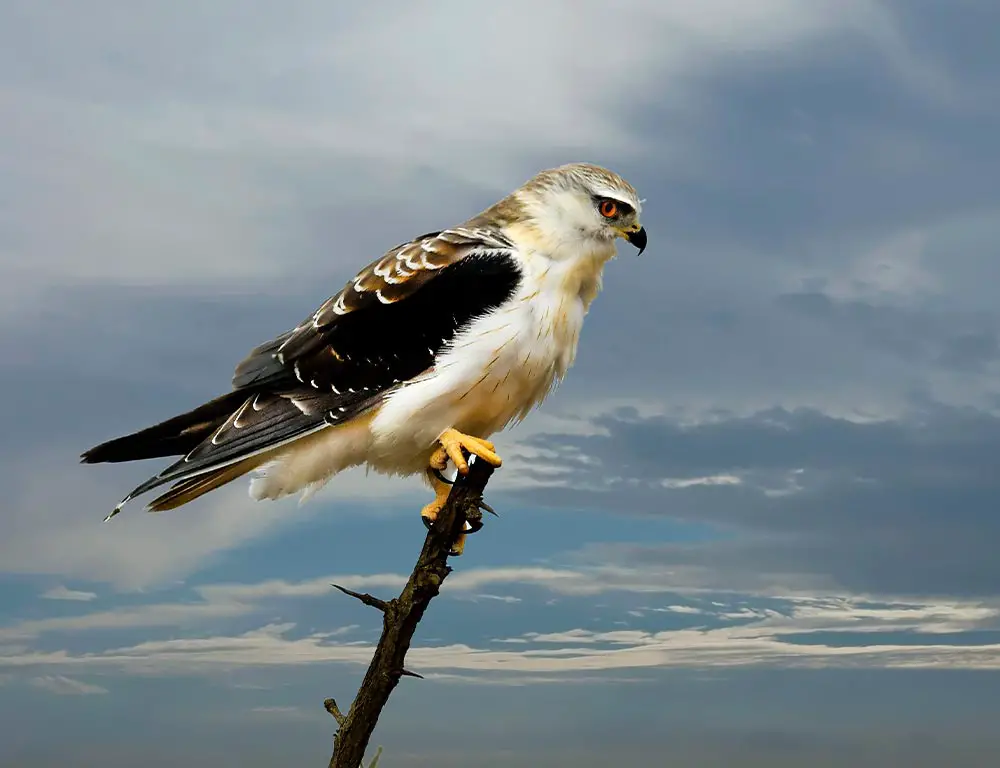
Falcons are a type of bird known as birds of prey. They belong to the genus Falco and there are approximately 40 different species of falcons. These birds are found all over the world, on every continent except Antarctica.
However, it is worth noting that closely related raptors, which are birds of prey, did exist in Antarctica during a geological period known as the Eocene. Falcons are known for their wide distribution and can be found in various habitats across the globe.
They have adapted to different environments, including forests, grasslands, deserts, and mountains. This ability to adapt has allowed them to thrive in diverse conditions. These birds have unique physical characteristics that make them excellent hunters.
Falcons have sharp beaks and strong talons, which they use to catch and kill their prey.
They are skilled at capturing other birds in mid-air, using their impressive speed and agility to chase down their targets. In terms of diet, falcons primarily feed on small to medium-sized birds.
They are known for their hunting prowess and can reach incredible speeds during their aerial pursuits. Falcons use their keen eyesight to spot their prey from great distances, and they often dive down at high speeds to catch their victims by surprise.
| Kingdom | Animalia |
| Phylum | Chordata |
| Class | Aves |
| Order | Falconiformes |
| Family | Falconidae |
| Genus | Falco |
19. Barn Owl
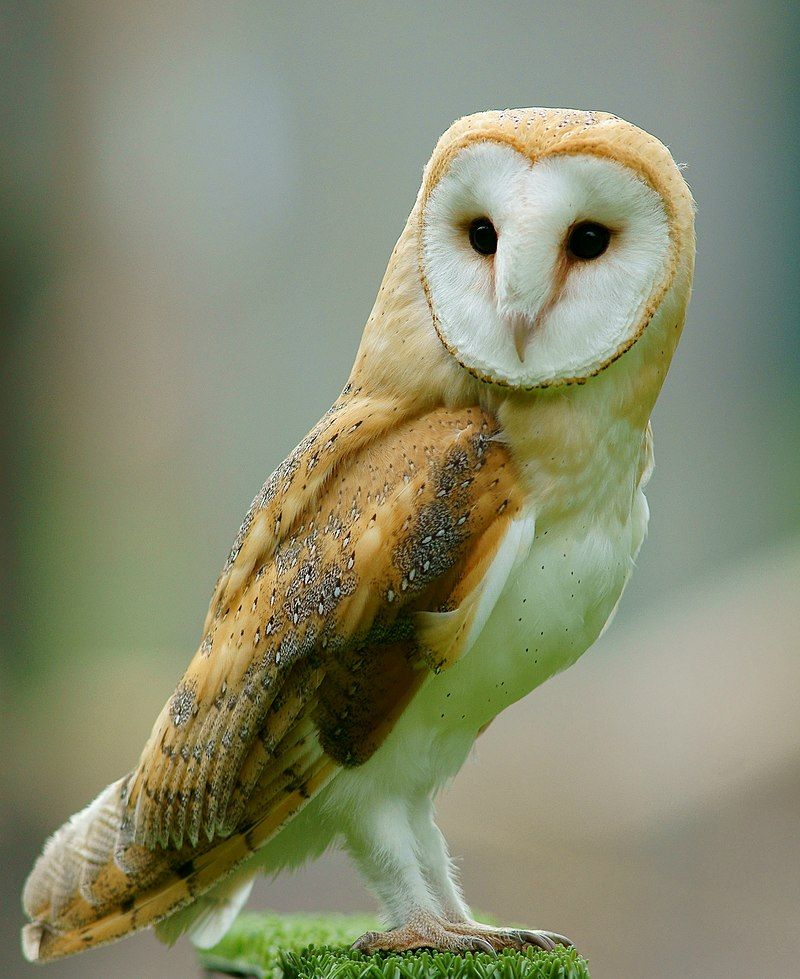
The barn owl is a type of owl that can be found in many different parts of the world. It is actually the most widely distributed species of owl globally. In fact, it is one of the most widespread species of birds overall.
Barn owls can be found in almost every region of the world, with a few exceptions. They are not typically found in polar regions or in desert areas. These types of environments do not provide the necessary resources and conditions for the barn owl to thrive.
Additionally, barn owls are not commonly seen in certain parts of Asia, specifically the areas north of the Himalayas. This could be due to a variety of factors, such as the availability of suitable prey or nesting sites. Some islands in Indonesia are also not home to barn owls.
It is unclear why these particular islands do not have barn owls, but it could be due to a combination of geographical, ecological, or historical factors. Furthermore, there are specific Pacific Islands where barn owls are not present.
These islands may lack the necessary resources or habitats for barn owls to survive and reproduce successfully. Overall, the barn owl has a wide distribution and can be found in many parts of the world.
| Kingdom | Animalia |
| Phylum | Chordata |
| Class | Aves |
| Order | Strigiformes |
| Family | Tytonidae |
| Genus | Tyto |
| Species | T. alba |
20. Short-Eared Owl
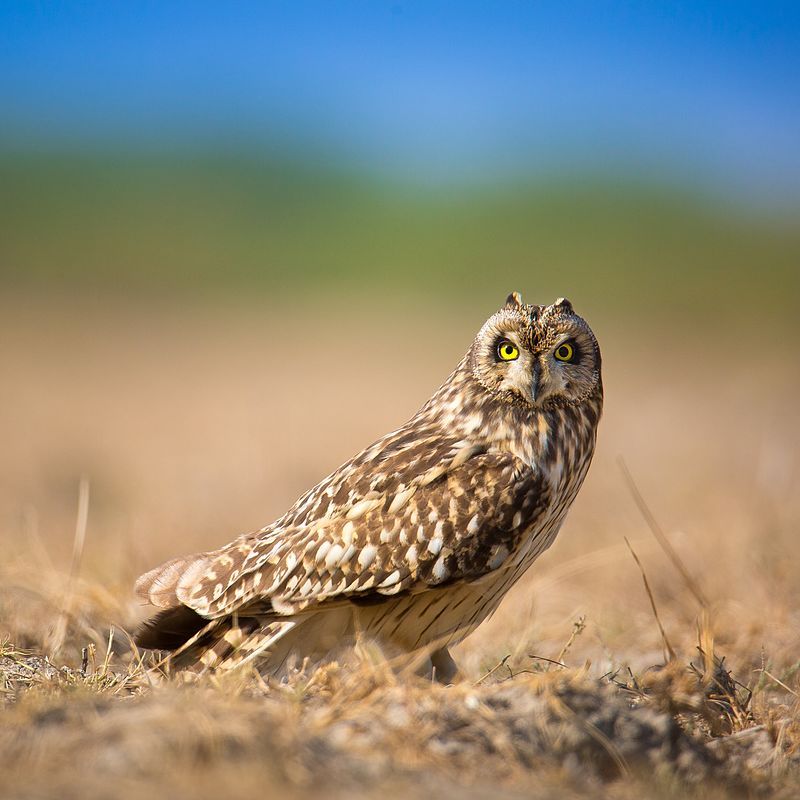
The short-eared owl is a type of owl that can be found in many grasslands around the world. It belongs to the family Strigidae, which is a group of birds that includes various species of owls.
Now, within the family Strigidae, there is a specific group of owls called the eared owls. The eared owls are known for having tufts of feathers on their heads that resemble mammalian ears.
These tufts are often referred to as “ear” tufts because they look like ears, although they are not actually ears. It’s important to note that not all eared owls necessarily have visible ear tufts.
Some eared owls may have ear tufts that are easily seen, while others may have tufts that are more hidden or not visible at all. This variation in visibility of the ear tufts is observed among different species within the eared owl genus, which is called Asio.
In summary, the short-eared owl is a widespread grassland species that belongs to the eared owl genus, Asio. Eared owls are known for having tufts of feathers resembling mammalian ears, although these tufts may or may not.
| Kingdom | Animalia |
| Phylum | Chordata |
| Class | Aves |
| Order | Strigiformes |
| Family | Strigidae |
| Genus | Asio |
| Species | A. flammeus |
21. Eagle
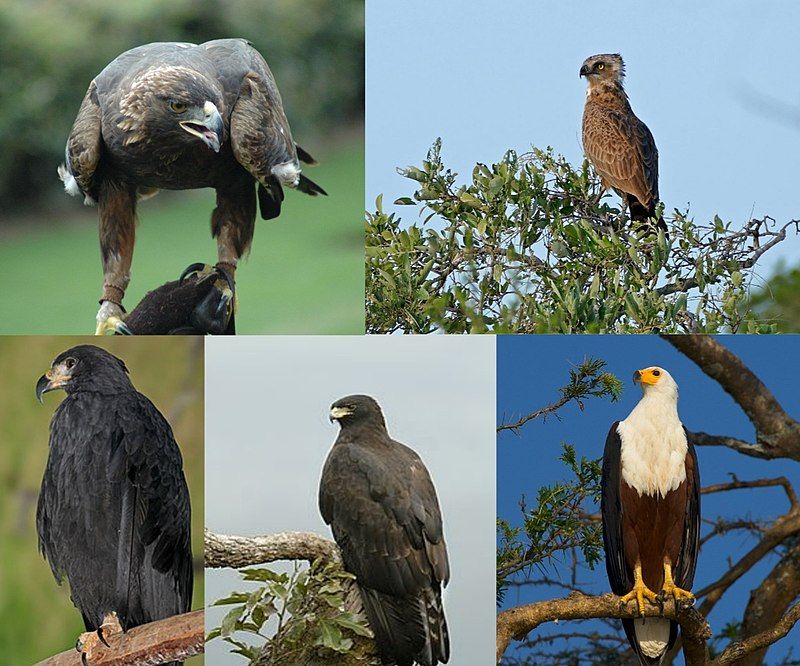
The paragraph introduces the term “eagle” as the common name for the golden eagle, bald eagle, and other birds of prey in the family Accipitridae.
This means that when people refer to eagles, they are generally talking about these specific types of birds. Eagles are part of various groups of genera, which are closely related.
This suggests that while there are different kinds of eagles, they share certain characteristics and have a common ancestry. Among all the groups of genera, the true eagles belong to the genus Aquila.
This means that the golden eagle, bald eagle, and other similar species can be classified as true eagles. Out of the 68 species of eagles, most of them are found in Eurasia and Africa. This information tells us about the distribution of eagles around the world.
It implies that these regions are home to a larger variety of eagle species compared to other parts of the world. To summarize, the paragraph highlights that the term “eagle” encompasses various birds of prey such as the golden eagle and bald eagle.
These eagles belong to different groups of genera, with true eagles falling under the genus Aquila. Furthermore, most of the 68 eagle species are found.
| Kingdom | Animalia |
| Phylum | Chordata |
| Class | Aves |
| Order | Accipitriformes |
| Family | Accipitridae |
22. Accipiters
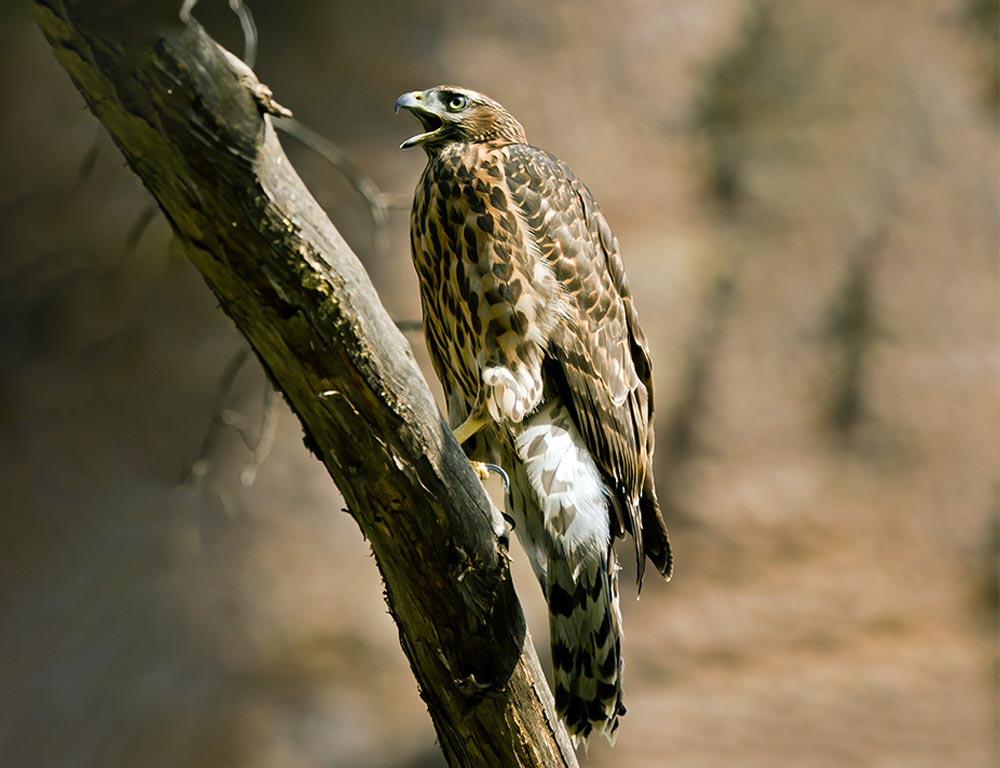
The paragraph talks about a genus of birds of prey called Accipiter. This genus belongs to the family Accipitridae. Accipiter is considered the most diverse genus in its family, with 49 recognized species.
The birds in this genus are commonly referred to as goshawks or sparrowhawks. However, it is important to note that this naming convention is more prevalent for species found in the Old World, which includes Europe, Africa, and Asia.
On the other hand, the New World species of Accipiter, which refers to the Americas, are commonly known as hawks.
This distinction in naming conventions between the Old World and the New World species is interesting. Accipiter birds are known for their exceptional hunting abilities and their specialized adaptations for capturing prey.
They have sharp, hooked beaks and powerful talons that enable them to catch and kill their prey effectively. These birds are also known for their agility and speed in flight.
They are skilled at maneuvering through dense forests and can quickly change direction while chasing their prey.
Their ability to navigate through wooded areas is particularly advantageous when hunting small birds and mammals. The diverse range of species within the Accipiter genus allows these birds to occupy various habitats.
| Kingdom | Animalia |
| Phylum | Chordata |
| Class | Aves |
| Order | Accipitriformes |
| Family | Accipitridae |
| Genus | Accipiter |
23. Hen Harrier
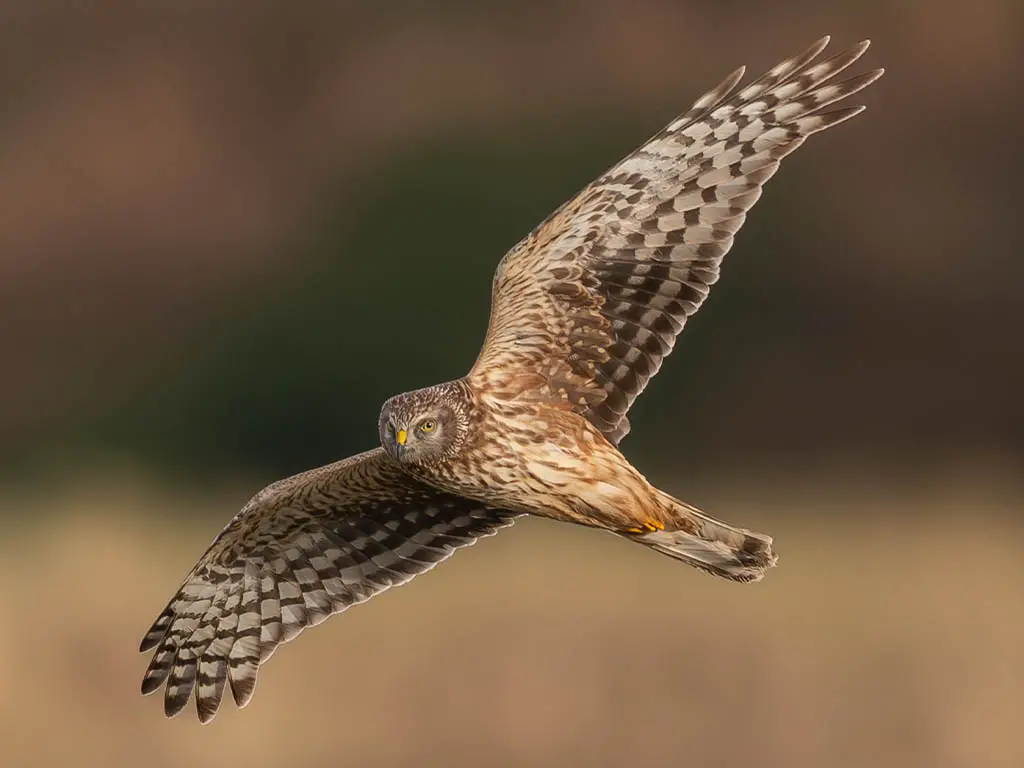
The hen harrier is a type of bird that hunts for its food. It is known as a bird of prey because it catches and eats other animals. This bird is commonly found in Eurasia, which is a large region that includes countries like Russia, China, and parts of Europe.
It prefers to breed in this area because it provides suitable conditions for nesting and raising its young. The name “hen harrier” refers to the bird’s previous behavior of hunting and feeding on free-ranging fowl.
In the past, it would often target and capture domestic chickens and other similar birds that were allowed to roam freely. During the winter season, the hen harrier migrates to warmer areas in the south.
This is because the colder weather on its breeding grounds makes it difficult to find enough food.
By moving to more southerly regions, it can access a greater abundance of prey and ensure its survival. Specifically, the hen harrier from Eurasia tends to migrate to southern Europe and southern temperate Asia.
These places offer milder climates and a variety of suitable habitats for the birds to find food and shelter. Migration is a common behavior among many bird species, as they adapt to changing seasons and environmental conditions. It allows them to.
| Kingdom | Animalia |
| Phylum | Chordata |
| Class | Aves |
| Order | Accipitriformes |
| Family | Accipitridae |
| Genus | Circus |
| Species | C. cyaneus |
24. Buteos

Buteo is a type of bird, specifically a genus of raptors. Raptors are known for their strong and sharp talons, hooked beaks, and hunting abilities. They are birds of prey. Buteo birds are medium to fairly large in size. They have a robust body, meaning they are sturdy and strong.
Their wings are broad, allowing them to glide and soar through the air with ease. In different parts of the world, Buteo birds are known by different names.
In the Old World, which includes Europe, Asia, and Africa, they are referred to as “buzzards.” However, in the New World, which includes North and South America, they are commonly called “hawks.”The terms “buzzard” and “hawk” can be ambiguous because they can refer to different bird species depending on the region.
This can confuse and make it difficult to understand which specific bird is being referred to. To avoid this confusion, sometimes the term “buteo” is used instead.
Buteo is the genus name for these birds, and using it helps clarify that we are talking about a specific group of raptors. This is particularly useful when discussing Buteo birds in a global context.
| Kingdom | Animalia |
| Phylum | Chordata |
| Class | Aves |
| Order | Accipitriformes |
| Family | Accipitridae |
| Genus | Buteo |
Conclusion
Birds of prey in New York play an important role in maintaining the balance of the ecosystem by controlling populations of pests and maintaining the health of various habitats.
They serve as indicators of a healthy environment and are symbolic of the restoration efforts and conservation initiatives taking place in the state.
Despite facing various threats, such as habitat loss and pollution, their presence and conservation efforts have shown positive results, leading to the recovery of some species.
It is crucial to continue supporting and implementing measures to protect these magnificent creatures and their habitats to ensure their long-term survival and the overall well-being of New York’s environment.